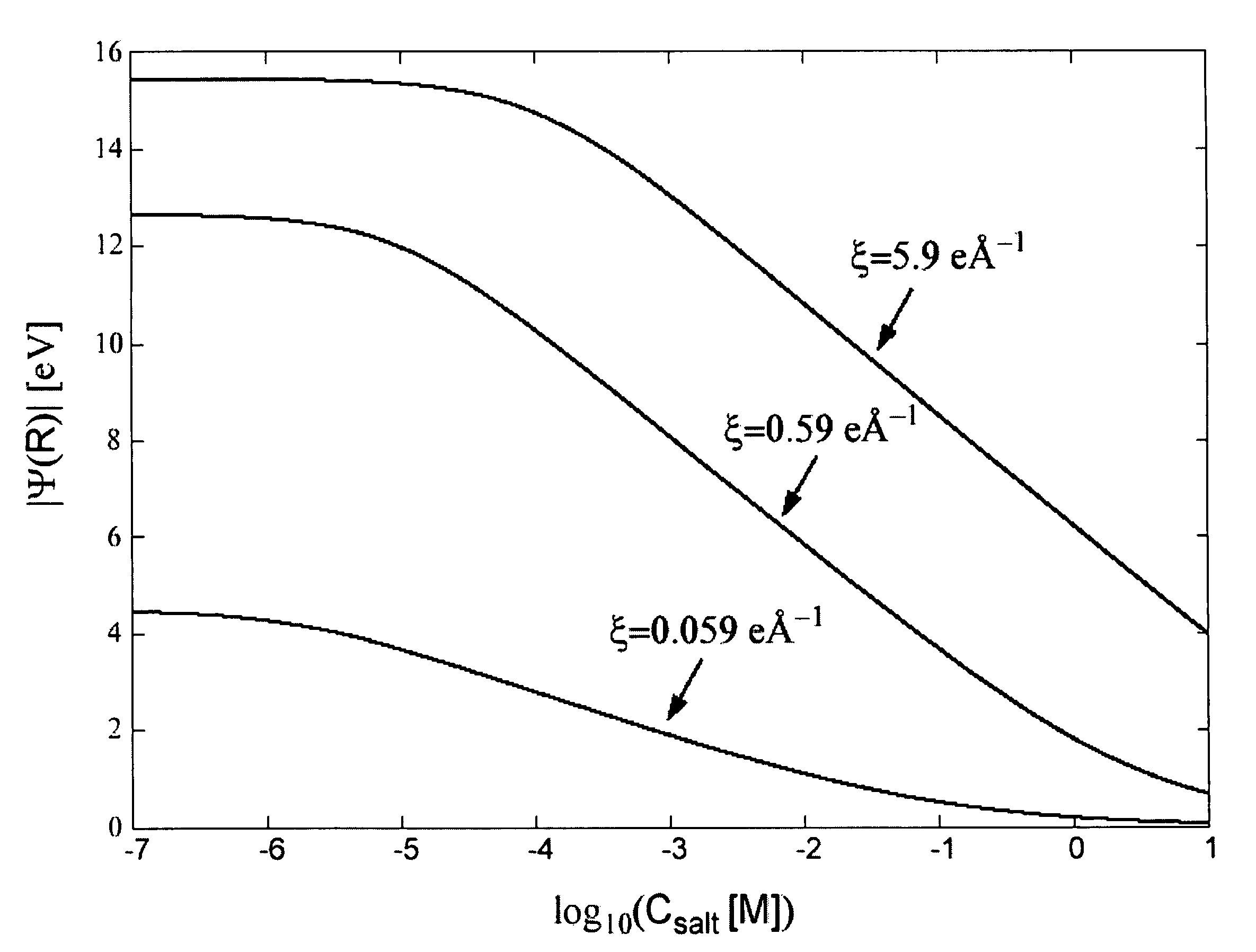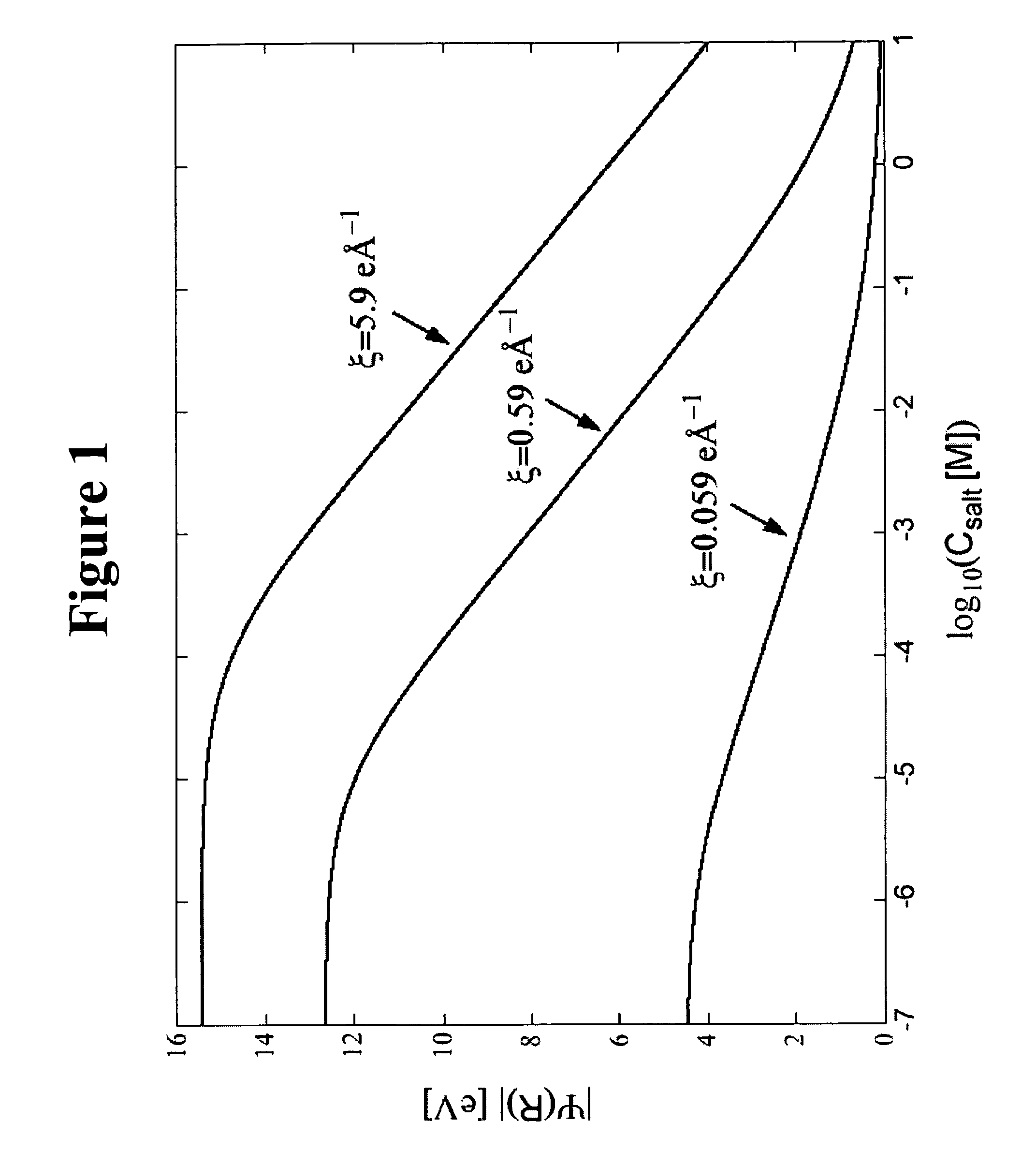Charged carbon nanotubes for use as sensors
a carbon nanotube and charge technology, applied in nanoinformatics, artificial filament chemical after-treatment, instruments, etc., can solve the problems of carbon nanotube tangle, heterogeneous product, and need for removal of supporting materials
- Summary
- Abstract
- Description
- Claims
- Application Information
AI Technical Summary
Problems solved by technology
Method used
Image
Examples
example 1
[0109]The single-wall carbon nanotubes of the instant invention are manufactured using high pressure carbon monoxide (HipCO) processes, or pulsed laser vaporization (PLV) processes and / or arc discharge (ARC) processes as further described and illustrated in the references cited above in the description of the preferred embodiments. Each of these processes produce SWCNT structures by depositing free carbon atoms onto a surface at high temperature and / or pressure in the presence of metal catalyst particles.
example 2
[0110]The charged single-wall carbon nanotubes of the invention are designed so an optical transition could take place. In order for an optical absorption transition to take place an electron has to be present on the ground or relaxed state in order to take in the energy of the optical photon and be elevated into the higher energy state. If the Fermi level is altered by an electric field, then the optical absorption spectrum will change. One such way to create an electric field near the surface of a nanotube is to use free charges in a solution, such as an electrolyte. In this situation the free charge may be driven to the nanotube surface by an external electric field to modify the Fermi level. Another means is to vary the strength of the electrolyte by using buffer solutions of various pH values.
example 3
[0111]The charged single-wall carbon nanotubes of the invention are made by taking the nanotubes of Example 1 and dispersing them in a water solution containing an electrolyte such as hydrochloric acid or DNA and sonicating the solution for three hours or longer as required to achieve the desired charged characteristics i.e.; a linear charge density in the range of ξ=0.059 eÅ−1 to 5.9 eÅ−1. Other methods of charging the nanotubes can be used as long as they achieve linear charge densities in the range described above.
PUM
| Property | Measurement | Unit |
|---|---|---|
| diameters | aaaaa | aaaaa |
| diameters | aaaaa | aaaaa |
| diameters | aaaaa | aaaaa |
Abstract
Description
Claims
Application Information
 Login to View More
Login to View More - R&D
- Intellectual Property
- Life Sciences
- Materials
- Tech Scout
- Unparalleled Data Quality
- Higher Quality Content
- 60% Fewer Hallucinations
Browse by: Latest US Patents, China's latest patents, Technical Efficacy Thesaurus, Application Domain, Technology Topic, Popular Technical Reports.
© 2025 PatSnap. All rights reserved.Legal|Privacy policy|Modern Slavery Act Transparency Statement|Sitemap|About US| Contact US: help@patsnap.com



